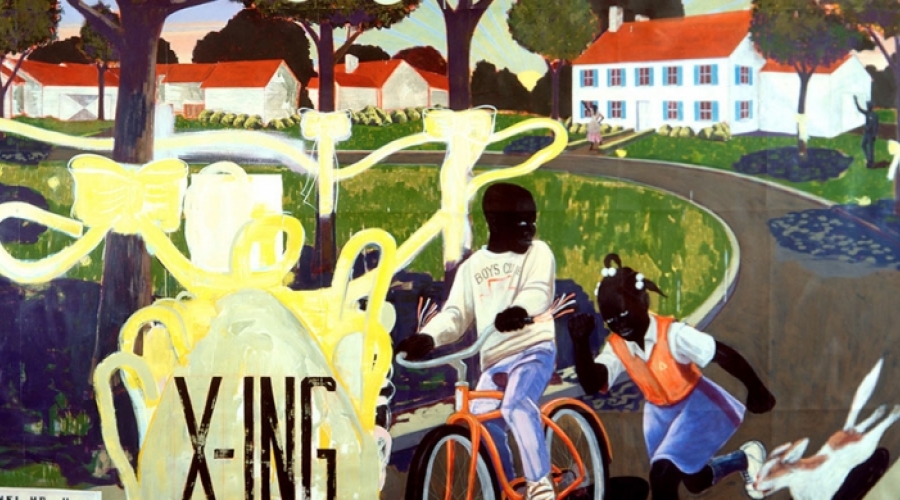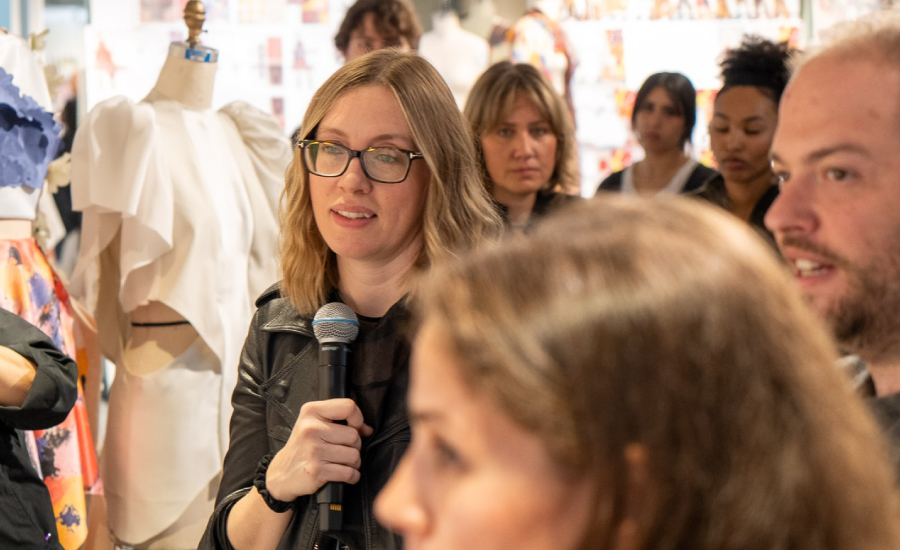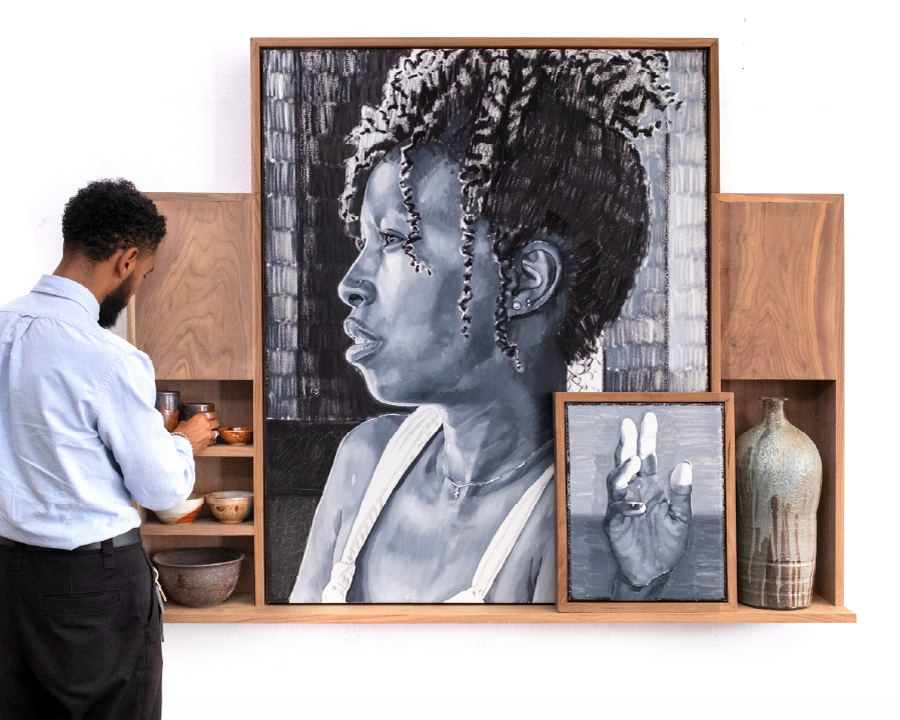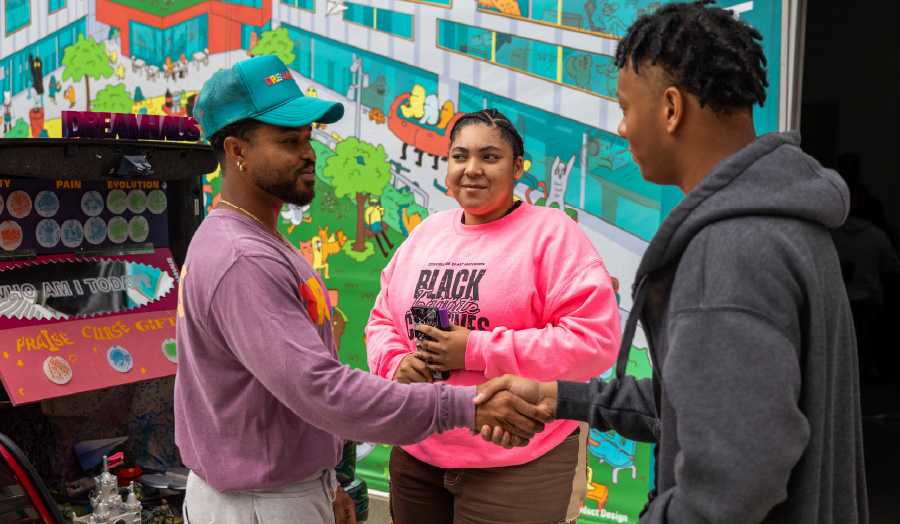
In 2016, the Kerry James Marshall ('78 Fine Arts) retrospective, Mastry, traveled
from the Museum of Contemporary Art in Chicago (MCA) to the Met Breuer. Standing behind
the clear plexiglass podium, about to address the press, Kerry took a deep breath,
looked down, noticed his descended zipper, corrected it, and then delivered his wonderfully
disarming chuckle, effectively deepening the awe of the already starstruck audience.
The exhibition fulfilled his biggest dreams, he explained, his work now in the Met
alongside his own selections of great historical artworks from the museum’s permanent
collection.
The first room of the retrospective was breathtaking, with nearly a dozen unstretched
canvases as large as 10 x 18 feet, painted with thick unblended passages, fixed to
the wall by rivets. These masterworks of narrative compositions are astutely conscious
of flatness, illusion, and draftsmanship, with dynamic brushwork and colors that freely
incorporate comics and pop culture as much as they sample the grand tradition. The
retrospective presented his entire oeuvre, including portraits, lightboxes, sculptures,
photography, and comics called Dailies.
Perhaps even more inspiring is how Kerry’s life path has provided the key ingredients
for his ever-expanding creative universe. Born in 1955, Kerry moved with his family
a decade later from Birmingham, Alabama to Watts in Los Angeles. During an era of
rising racial tension, they moved a few years later to a housing project called Nickerson
Gardens, just before the historic Watts riots.
Kerry knew early on that he wanted to be an artist and was selected from his Junior
High School to attend advanced courses in drawing at what was then known as Otis Art
Institute. While drawing a master copy of Otis instructor Charles White’s lithograph
of Frederick Douglass, he had a realization about the insularity of white figures
representing ideal beauty throughout art history. He’d go to museums to observe masterful
technique, but his appreciation was hampered because of the dearth of black subjects
who seemed excluded from the whole genre.
See Kerry James Marshall’s work in Figuring History alongside Robert Colescott and Mickalene Thomas at the Seattle Art Museum through May 13, 2018.
Image: Our Town, 1995 Kerry James Marshall



